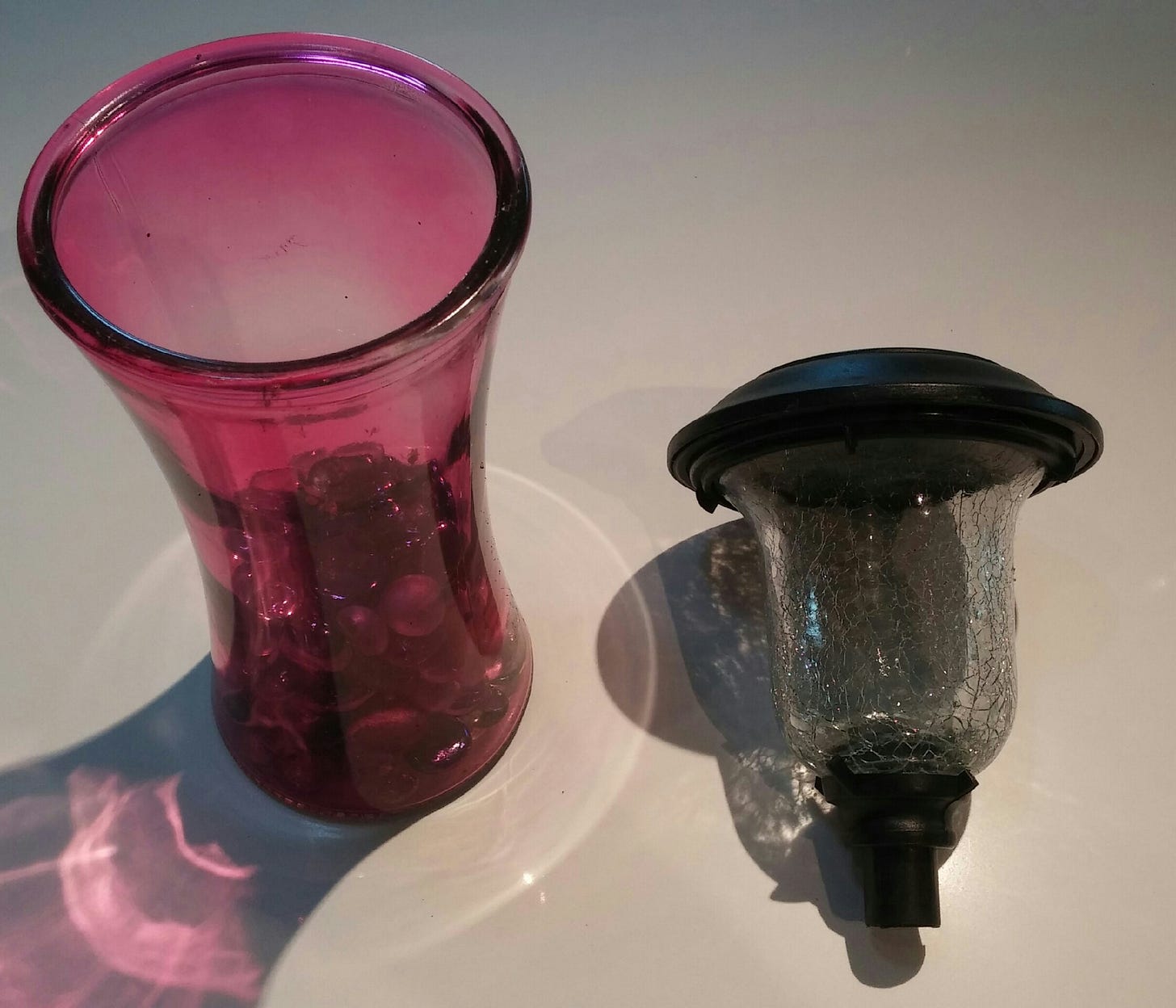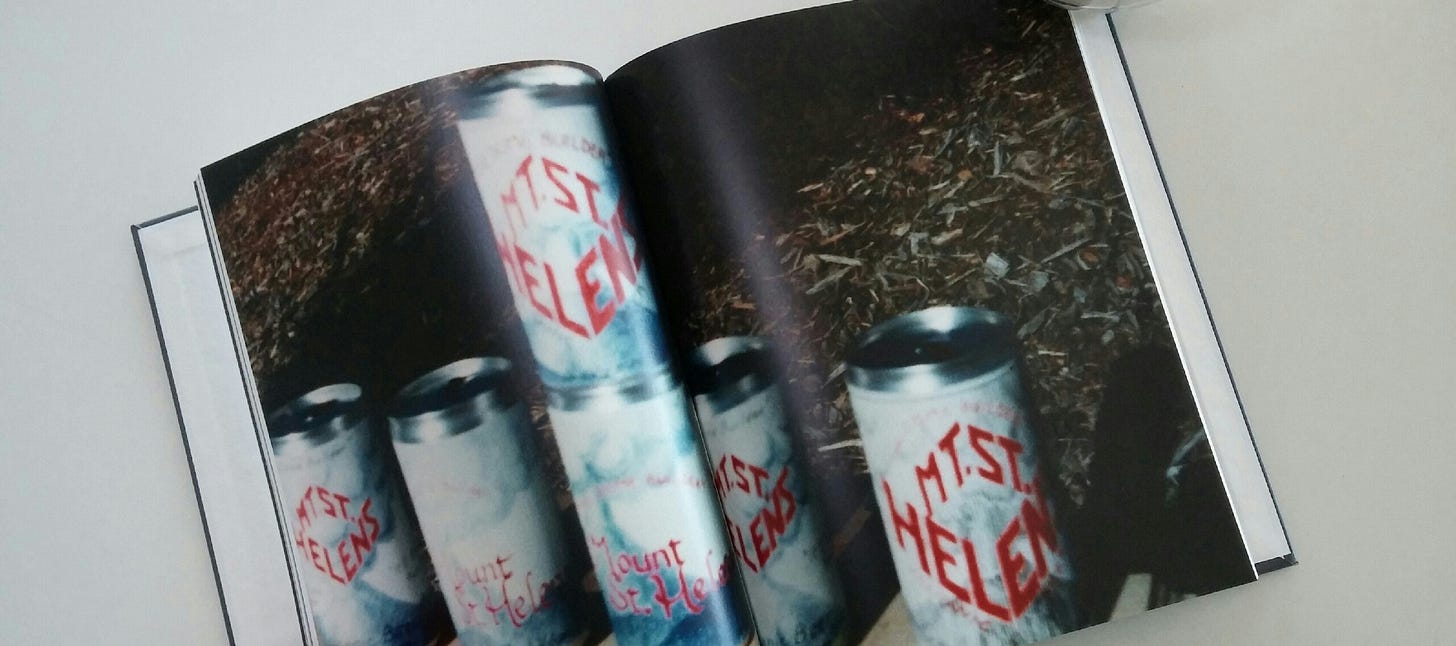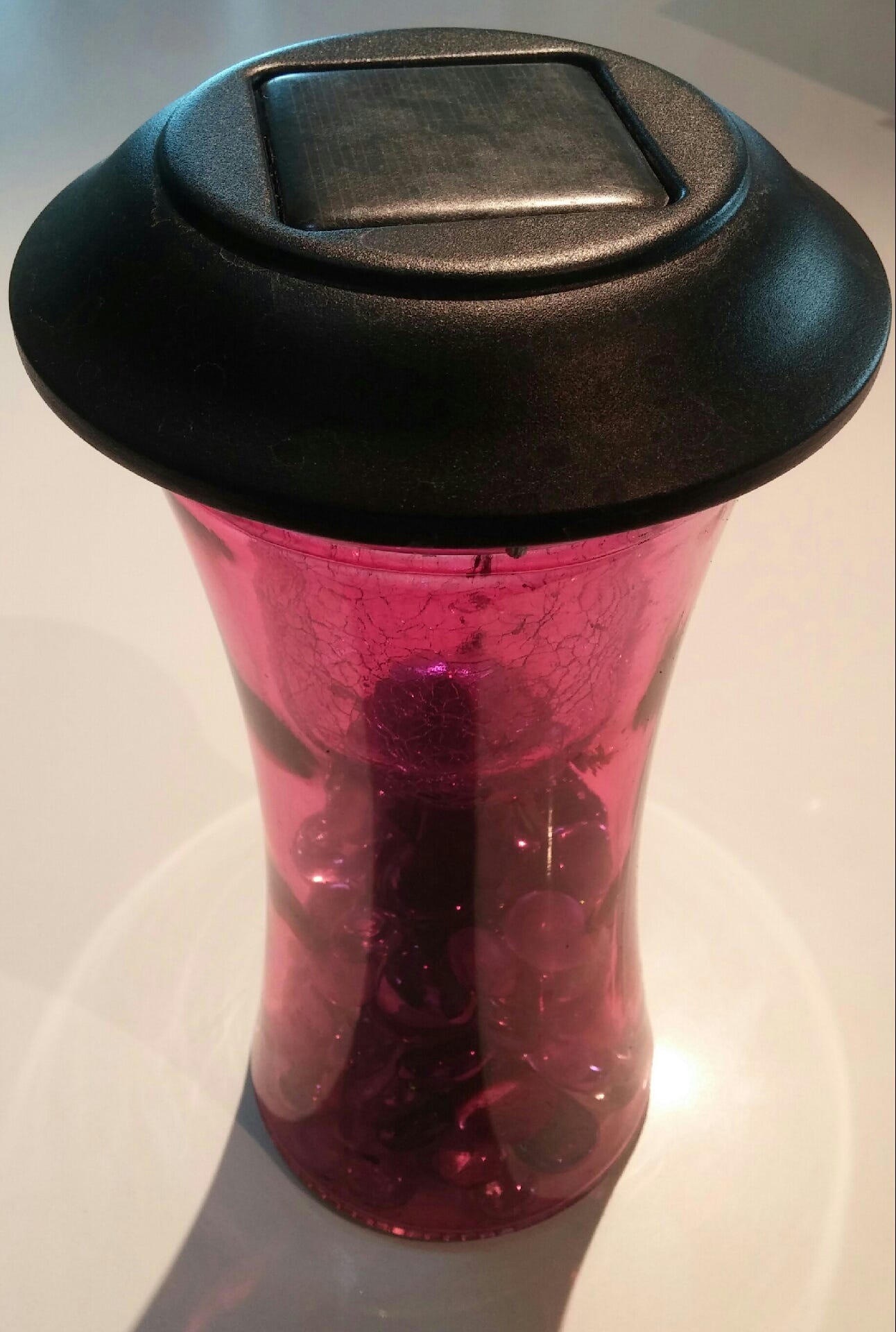What’s to say? Our dad invented stuff. At breakfast he’d hold up a paperclip or a safety pin or the plastic tab from the bread bag and say, “The man who invented this never had to work another day in his life!”
In response our mother would glance up from her Daphne du Maurier paperback and say, “A woman invented that.”
Henry James once said, “The novelist sells for two dollars to strangers the secrets he would not tell his closest friend.”
When in 1980 Mount St. Helens erupted and showered our region with volcanic ash for months, life changed. Anyone with a car learned to pull the engine air intake filter and wrap it with fresh toilet tissue every morning. Otherwise, the fine ash would score the piston cylinder walls. We learned not to brush the ash from our windshields because it would scratch the glass. Instead, we rinsed away the new ash each morning with pails of water. And while regular folks did that, my father invented Mount St. Helens Beer.
He trademarked the slogan “The Dome Builder” because a lava dome was already rising in the exploded crater. He sold the cans of beer through an ad in the back of the National Enquirer. Specialty beer connoisseurs did not beat a path to our door.
What I’m saying is that the apple never falls far from the tree. And when I wanted to light up a hiking trail I’d cleared through the woods around my house I invented the following.
First, you’ll need a solar yard light. The short type with a stake you’d stab into the ground. Look for the ones with the lightest lumens. The higher the lumens, the brighter the light. Often these come in six packs.
You’ll also need a cheap florist vase or vases. Look for these in thrift shops. And you’ll need a handful of the glass pebbles sold in small bags at any dollar store.
Take the lantern of the solar light—recycle the metal stake—and look for a vase it will fit inside. A slight overhang around the vase lip will prevent rain from collecting inside. Fill the vase partly with glass pebbles, for the weight. Drop the lantern in the top, and—voila—you’ve got a bright path light in whatever colors of vase you can find.
NOTE: To help the lantern fit snugly into the top of the vase, you might need to cut off the ribs that run done the sides of the glass or plastic lens. Use wire cutters to snip only the ribs. Leave the top flange intact because it holds the lens to the solar assembly at the top.
Junk stores will sell you heavy glass kitchen canisters from the ’70s. After Valentine’s, stores are full of red and pink vases. You’ll find the typical green vases for free, abandoned on street corners. The glass pebbles will keep the things upright in the wind, and keep them from sliding off tables or whatnot.
After the first, I made another. Six, seven, eight lights later I was still looking for vases and making more lights. They crowded the top of a patio table where I’d stare at them after dark. The silent glowing colors of them. And like Richard Dreyfuss in Close Encounters of the Third Kind, I was hooked. This silly glowing thing meant something. So I scavenged more vases and slapped together more lights. After dark, the patio table glowed like a cathedral window, and I’d stay up late, spellbound.
All I could grasp was that I needed to make more. It wasn’t right, not yet.
Stephen King says that when you write you’re unearthing an artifact, and the best writing can uncover the artifact intact. Whether the artifact is from some collected unconscious or just your own, you have to start somewhere.
For all of one summer I filled vases with glass pebbles and topped them with solar lights. I found a bigger table that would hold the growing collection. At last, one cold dusk I stood watching as each light blinked on, and when they all blazed yellow and red and green, orange, blue, purple, pink and white, the scales fell from my eyes. So to speak.
Stephen King says that when you write you’re unearthing an artifact, and the best writing can uncover the artifact intact.
This waist-high rainbow of lights, it was fireworks yet it was Ferris wheel neon yet it was Christmas lights yet it was a kaleidoscope pointed straight at the sun yet it was something more. It glowed up at me cold and sleepy as I walked in a slow circle around the table.
When I was small the county fair would stage a carnival. On the midway, games offered goldfish and stuffed animals as prizes. One tent showcased a heaping pyramid of glassware. Heavy ashtrays. Beer mugs. Candy dishes, all of these stood stacked in a pile that tapered to a tall point. Bright lights hit this from every direction, below and above, until all this cheap carnival glass glared like a leaping bonfire of colors.
If you threw a quarter and it landed in a dish you won the dish. This created a constant rain of flashing silver that plinked and bounced off the ashtrays and whatnot and tinkled down through the pile. Chimes. This, this mountain of shining color and money ringing like a shot machine pay-off, it had held me captive for hours as a kid.
That’s the long-buried memory that drove me to make so many of these solar lights. It’s why they had to be crowded on a tabletop. Why I had to stagger out into the cold night to stare at them in the dark. I’d wager those lights reminded me of something else, a thing beyond the physical world, but that’s not somewhere words can go.
At the risk of sounding like Yoda, that’s my advice for accessing your best ideas. Begin with something that seizes your attention1. A vision or scent or motion. You don’t have to grasp its meaning, it’s better if you don’t. The mystery and the appeal will pull you back to the work as you build it, whatever it will become. Only once you’ve manifested the thing can you get your hands around its true nature as well as your own.
Henry James once said, “The novelist sells for two dollars to strangers the secrets he would not tell his closest friend.”
To do so you have to trick yourself into salvaging something you probably buried long ago for a very good reason. Still, that bright, shining object lures you. It keeps you working until you recover that part of yourself you’d thought was lost.
These days the paths through my woods glow at night with a winding trail of lights. They blink on at dusk, and a trail of colors trace all the way back to a childhood I’d completely forgotten.
My older sister lives in a beach community heavy with artists, who twice yearly organize a show and sale of their work. A pattern developed: the lower the quality of the artwork, the more the artist spent on matting and framing. It was common to pay ten dollars for a painting that came with two hundred dollars worth of matting and framing. The problems began as artists bought each other’s work, discarded the painting or print, and used the high-quality frame to submit their own work at the next show. Other artists recognized their previous frames and realized that their art had been tossed in the trash. This triggered a rash of people buying art only for each other’s frames. The “context” came to mean more than the art itself.
Hearing about this, I was hooked. I began to imagine a frame that would make any picture beautiful. No matter how sloppy or ugly the artwork, the frame would make it a masterpiece. Around this time a friend — who framed art for a living — told me a funny story about an art heist in Spain. Thieves broken into a museum and cut the canvases from the frames and made off with the entire collection. The story’s twist? The paintings themselves were lesser works of little value, but the left-behind frames had been ancient and worth a huge fortune. Again, here’s context trumping content. Marshall McLuhan would cream himself over this!
The upshot of all this became Fight Club 3, and the initial reveal of a picture frame that added glory to anything within it. In short, all of these disparate bits of news inched me down a road I found enticing.










There's a gorgeous guy on Instagram, burly with a beard, who jokingly calls himself Bluto from Popeye. Every day he posts himself saying "Mornin'" is his hunky deep voice, just that one word. It's a shot of dopamine right to the brain, and I get sad if I miss it in his stories. I get the same feeling when you write "whatnot." Thanks for the double shot.
In 1981 my elementary school class was given a presentation on electricity by a now mostly forgotten inventor of the three-way lightbulb. It was so long ago now that I really only recall that he seemed incredibly old and that he had the class hold hands to demonstrate how we could form a circuit to illuminate a lightbulb. There’s a fair bit of illumination (and even some virtual hand-joining) happening around here. Thanks for sharing, teaching, providing, and chatting. I’m positive that I’m not the only one feeling charged up here.